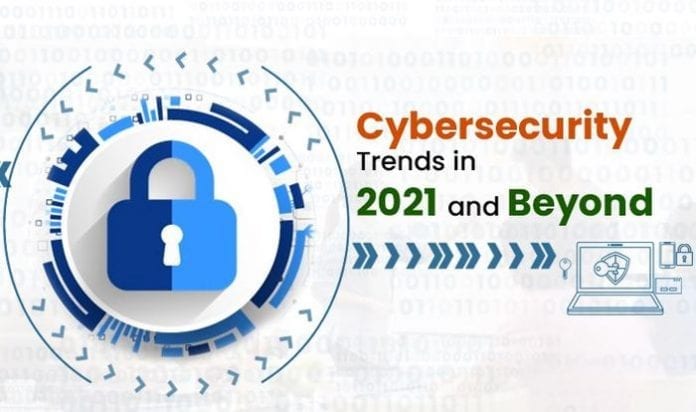If 2025 taught us anything, it’s that making predictions for a new year is an exercise in futility. Nobody truly knows what will happen, even when all of the signs are pointing in a particular direction. But, with the acknowledgment that everything is fluid, we’re going to attempt to explore some of the 2025 cybersecurity trends and the ways in which businesses can proactively protect themselves and stay out of harm’s way.
Cybersecurity Trends and Expectations for 2025

Cybersecurity is more important than ever. As a result of the COVID crisis, the number of companies operating virtually has increased dramatically. And even when the pandemic goes away, we’re going to see a significant shift to digital and online business.
Cybercriminals and hackers are licking their chops at the thought of being able to sink their teeth into more businesses and organizations. And if you poll experts in the security industry, they’re encouraging us to be on the lookout for trends like:
Remote workers become the target. With millions of fresh faces working remotely, cybercriminals are looking for ways to target remote workers and use them as their “in” to compromise vulnerable organizations and networks. They’ll continue to use the same attacks that have always worked – phishing, ransomware, etc. – but their approach will shift to account for new styles of working. Employees who are improperly trained on how to work from home will put their companies at greater risk.
Legacy security creates problems. We’re seeing legacy security architectures, such as VPNs, become the “weak link” for many organizations. Look for these systems, which often give employees excessive access to internal data and resources that they don’t really need, to become liabilities in 2025 and beyond.
Ransomware continues to rise. For many cybersecurity analysts – including some of the most highly respected in the industry – ransomware will continue to be the biggest concern for businesses and their security teams in 2025. They resulted in an estimated $1 billion in financial damage last year, and things will only intensify moving forward.
Insider attacks continue. As unfortunate as it is, insider attacks are always going to be a problem that large organizations have to deal with. And while you can’t always predict who will pose a threat, you can prepare for the threats by instituting robust security practices.
In other words, attacks are going to come from all angles and sides. Businesses that ignore these new developments and stick with the status quo could find themselves in a compromising situation at some point in 2025. Those who invest the time and resources into strengthening their cybersecurity will lower their risk.
4 Tips for Improving Your Cybersecurity Strategy

The challenge with cybersecurity is that the targets are always moving. Thus the only way to protect your business is to constantly adapt and improve. Having said that, here are some strategies that you may find helpful over the next 12 months.
1. Train Your Team
You can have the greatest cybersecurity technology in the world, but you’ll only ever be as strong as your weakest link. Thus it’s important to empower your team with the knowledge, tools, and frameworks that they need to protect your business.
An investment in cybersecurity training never delivers a tangible and immediate return (in terms of revenue). But you have to trust that you’re preventing future attacks, which saves your business hundreds of thousands of dollars.
2. Update Your Systems
Legacy systems have to go. The cybersecurity field is advancing at a faster pace than ever before, and it’s up to you to keep up with the times. These legacy solutions eventually get left in the dust, which leaves them vulnerable to known security threats. Keep up with the times, lest you find yourself in a compromising situation.
3. Centralize Your Technology
There’s too much security “noise” in most organizations. It’s time to correct this issue by centralizing your technology. And one of the best options is an SIEM security system.
A SIEM serves three basic purposes. First off, it centralizes security notifications from all of your different technologies (including firewalls, WAPs, anti-virus tools, etc.). Secondly, it provides logging and reporting functionality for compliance.
According to Stratozen, “The third, and probably most important, function of a SIEM is automated cross-correlation and analysis of all the raw event logs from across your entire network. This is where a SIEM looks for hidden cybersecurity issues that would otherwise go unnoticed by combining data from several different sources.”
If you’re looking for a way to streamline your security and get a better grasp on everything that’s happening in and around your organization, SIEM security is the answer. Implemented alongside the other tips in this article, it’ll serve you well.

4. Protect From the Inside Out
As mentioned, insider threats are going to be a huge problem in 2025. And it’s no longer an issue that the average organization can ignore.
“The insider threat is one of the greatest drivers of security risks that organizations face as a malicious insider utilizes credentials to gain access to a given organization’s critical assets,” cybersecurity expert Steve Durbin says. “Many organizations are challenged to detect internal nefarious acts, often due to limited access controls and the ability to detect unusual activity once someone is already inside their network. The threat from malicious insider activity is an increasing concern, especially for financial institutions, and will continue to be so in 2025.”
Aside from thoroughly vetting new hires to ensure you bring in the right people, there’s something to be said for limiting access and creating more stops and boundaries inside your network. People should only have access to the information they need at that moment in time. Giving away too much access is a recipe for disaster.
Adding it All Up
Whether you run a small business or a global corporation, operate out of a physical location or manage your business virtually, have a young team of tech whiz kids or a veteran group of grizzled professionals, cybersecurity is something you have to pay attention to in 2025. And while you’ll certainly need to adapt it to your own needs, the hope is that this article provides a solid foundation for future growth.









